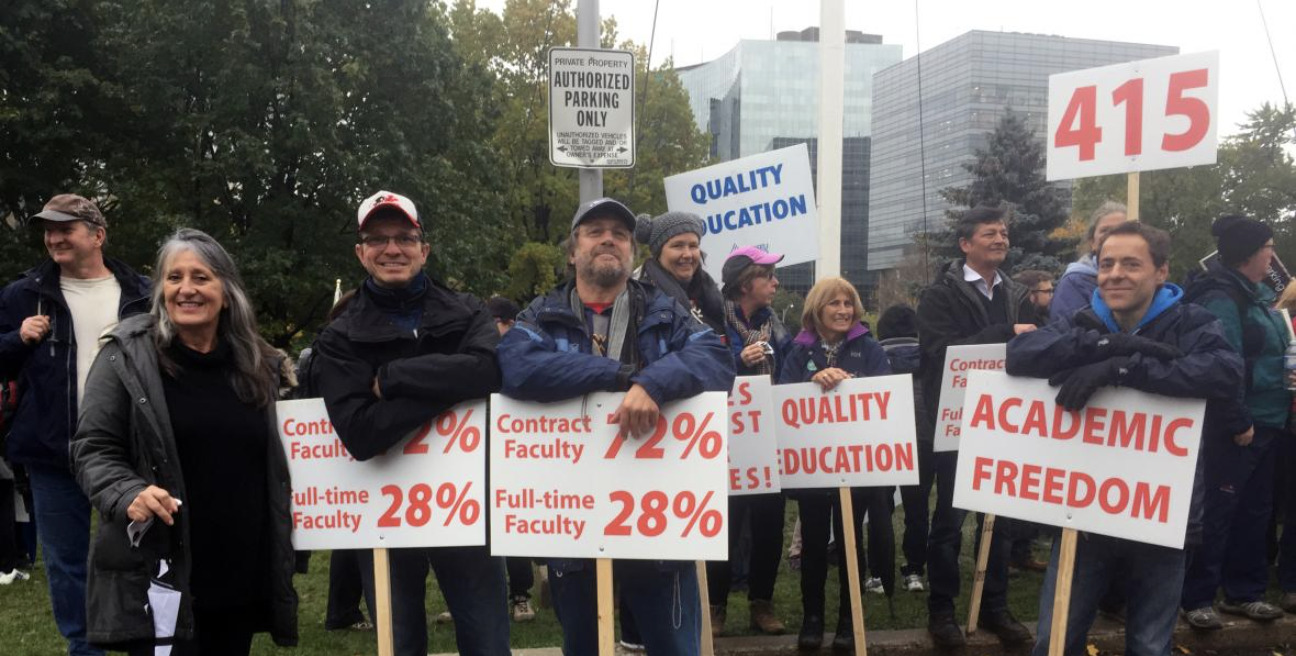Workers continued to fight for greater job protection and security while laws about work changed across Canada in the past year. Here, rabble‘s 2017 labour reporter Meagan Gillmore recaps some of the stories that mattered most:
Employment laws change in Ontario
In November, the Ontario government approved sweeping changes to the province’s Employment Standards Act (ESA) and Labour Relations Act (LRA). Bill 148, The Fair Workplaces, Better Jobs Act updated the legislation for the first time in decades. Workers’ advocates hailed much of the changes, especially the rise in minimum wage. General minimum wage will climb to $14 an hour in 2018, before hitting the much-lauded $15 an hour mark in 2019. But union leaders say the law should have gone further, especially in terms of extending card-based certification to all industries.
The struggle isn’t over. The government will consult on industry-specific exemptions throughout the coming months. Ontarians head to the polls in 2018. The Liberals, who are seeking re-election, and the New Democratic Party supported the changes. The Progressive Conservatives opposed. Don’t be surprised if the debate carries into the campaign.
Students left in the lurch during longest college strike in Ontario history
Post-secondary students in Ontario were dealt a harsh blow when college faculty hit the picket lines in mid-October. The approximately 12,000 professors, counsellors and librarians remained on strike until the government forced them back to work five weeks later. Chief among faculty concerns was the college system’s reliance on part-time and contract work. The colleges and faculty agreed to a new contract on Dec. 20. But changes to the system could be forthcoming. A task force to review the province’s college system has been created. The Ontario Public Service Employees’ Union (OPSEU), the union representing the striking faculty, also spent part of the year organizing part-time workers. That vote was held shortly before the strike began.
Workers across industries battle against precarious work
Employees fought back against precarious work and struggled for job security in various sectors during a time of changing provincial and international law. NAFTA negotiations loomed in the background during a four-week strike at GM’s plant in Ingersoll, Ont. Changes to Ontario’s employment law highlighted the lack of protections for workers in reality TV and documentaries. Shortly after changes to provincial employment law were introduced, slot machine workers at Toronto’s Woodbine Racetracks were locked out for nearly a month while negotiating a new contract they hoped would guarantee, among other things, better scheduling.
Lengthy strikes end, others continue
Notable labour disputes ended this year. Journalists at the Chronicle Herald in Halifax agreed to a new contract in August after being on strike since January 2016. In Quebec, a nine-month strike at a smelter west of Montreal ended in November. But other conflicts continue. In Gander, N.L., workers at D-J Composites have been locked out for more than a year. Unifor, the union representing the workers, continues to question the company’s practices.
Unions take right to collective bargaining to court
Unions flexed their legal muscles this year, with several questioning the constitutionality of proposed laws. In Manitoba, unions have joined together to fight a law that would freeze wage increases in the public sector. They say it violates their right to collective bargaining, something the Supreme Court of Canada has secured. Unions in Nova Scotia asked to be included in a legal review of a law that would also limit public service wages in that province. Labour enjoyed some legal victories. Quebec’s labour tribunal reaffirmed health-sector workers’ right to strike. And in November, the Supreme Court ordered the federal government to resume paying federal lawyers when they’re on-call.
Federal government workers still mired in ashes of Phoenix
Other federal government employees continue to struggle to be paid properly and on time. Problems with the Phoenix payroll system continued this year, forcing the unions that represent them to respond to workers who are critical of how the unions and government have responded to the issue.
Marginalized workers find success and challenges at work, and in labour
In the wake of the 2016 election of Donald Trump as president of the United States and concerns about racism, some workers and unions are becoming more active in social causes not directly related to their workplaces. But Indigenous workers, those with disabilities and people with criminal records continue to face barriers to employment and in the labour movement. Some progress has happened. Investors are being encouraged to consider Indigenous rights while other Indigenous workers have joined unions. People with disabilities are creating strategies to confront employment barriers. Social enterprises and proposed legal changes may make it easier for people with criminal records to find work.
Support for survivors of domestic violence increases
Sexual harassment dominated headlines in 2017, as allegations against several public figures flooded the news. Before the media firestorm though, unions have been pushing to guarantee greater job protection for workers who need time off to leave violent relationships. Job-protected leave for survivors of domestic violence became law in Alberta in June, and the movement is growing for similar leaves across the country. The topic became part of debates about changes to Ontario’s employment laws. In November, the province created a new leave that would give workers experiencing domestic violence job-protected time off, including five paid days.
Meagan Gillmore is rabble.ca‘s labour reporter for 2017.
Photo: OPSEU/Twitter
Like this article? Please chip in to keep stories like these coming.




